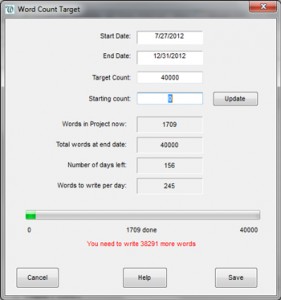In the span of 4 months, I’ve been on both sides of the job application and interview process. First, I was the job seeker, sweating my way through the interview to secure a position as a (first time) manager. Then, with no time to even settle into the corner cubicle, I began the task of hiring an employee.
Being on both sides of the interview table in such a short time gave me a new perspective on (and understanding of) the whole “recruitment” process. Since then, I’ve been overwhelmed with the urge to share this new understanding with other job seekers. So in this two-part series, I’m going to give my take on how to help yourself, and your potential recruiter, through the application and interview process.
Last week, I talked about nailing your job application. This week, I’m going to give you tips on mastering your interview.
Mastering Your Interview
I don’t know about you, but the interview part of the job search meets my top two criteria for personal awkwardness: being the center of attention and talking about myself.
Needless to say, they’re a sweat and nausea inducing experience for me.
Because of that, I’ve developed a few tricks along the way to get myself through them. This week, I’m going to share some of those interview (survival) techniques that I’ve learned by being on both sides of that table.
The General Questions
It’s hard to prepare for the questions you may be asked during your interview, but it’s not impossible. The first thing you can do is fire up your favorite search engine and look up “standard interview questions” for the type of position you’re interviewing for.
While they may not be the exact questions you’re going to be asked, they’ll give you a good idea of what managers/recruiters are looking for these days.
Also, sit down and think “If I were hiring this position, what would I want to know?” Again, not an exact science, but it gets you thinking.
And while you’re thinking, write down some answers to those questions to study between now and your interview. You might be surprised at how that can help you feel confident and prepared.
The Strengths & Weaknesses Questions
The “What is your greatest strength?” and “What is your greatest weakness?” questions have been standard on every interview I’ve ever participated in. You can probably expect to hear them in some form in your interview too.
They’re also my least favorite questions. I’d rather memorize and recite the entire bloodline of the British royal family than try to figure out what I’m good at.
But, while they might be hated, they’re also a great opportunity to shine! Before I explore each one a little further though, let me throw in this little bit of advice:
Don’t be glib. Really think about your answers. And keep the answers related to the job you are applying for.
Strengths
I actually find this one harder to answer than the “Weakness” one. I think it has something to do with “tooting your own horn.” I don’t want to come across as an arrogant jerk or superwoman. But I don’t want to sound like I’ve got cooked spaghetti for a spine either.
So, strength question advice number one: Take a good, honest look at yourself and write down everything that you can even consider as a strength. If you can’t think of anything, talk to people who know you well and ask them what they feel your strengths are. You’ll be happily surprised by what they say.
Now go through that list with the position you’re interviewing for in mind. For today’s example you’re interviewing for a team leader position. Look at your list of strengths and highlight the ones that stand out as “leadership” skills. Let’s say your list includes: Extroverted, Time Management Skills, Good at Translating Tech Speak to Layperson Terms, etc.
Next it’s time to decide which item on that list is your greatest strength as it relates to the position you’re interviewing for.
I’m going to pick “extroverted” for this example. As an extrovert, you’re not shy, you can create a dialog with anyone about anything and you’re great about making even the shyest person on your team open up and share ideas in a group setting. So, your team building skills are excellent.
Now that you’ve got your greatest strength highlighted, circled and underlined, don’t forget to come up with an example of how you’ve used this skill, just in case you’re asked. Remember, “Chance favors a prepared mind.”
Are you ready to flip that coin and talk about our weakness and how we can turn it in to a second strength?
Weaknesses
Pick up your pad and pencil again. It’s time to make another list. This time, list out your weaknesses.
Remember, be honest, not glib. There are two reasons for this.
One, you want to pick a “weakness” that you can work some spin doctoring on and two, glib answers, such as “I tend to forget it’s time to leave!” are mildly annoying and can backfire on you. You’re trying to say “I get so focused on the task at hand that I lose track of time.” What they might hear is “I have no time management skills.”
If that’s a legitimate weakness, though, then say it in English. “I’ve been working on improving my time management skills by using lists and my calendar to make sure I stay on top of tasks.”
That answer is clear, positive and it shows that you know you have an issue, but you take steps to make sure it doesn’t impact your workload.
You can also try to spin a weakness into another strength. Let’s pick something from your list and work some magic.
You’ve reached the weaknesses question of your team leader interview, and during your prep you singled out being an “introvert” as your greatest weakness.
You tell your interviewers that, yes, you’re introverted, but that you find it can be a strength in a leadership position. You may not be the first person to speak up in meetings, but, by sitting back and observing the meeting first, you can read between the lines and help people express what they’re trying to say if they’re not getting their point across.
And since you tend to observe people more, you’re able to quickly pick up on personality traits as well as potential conflicts between different personalities, allowing you to divert those conflicts before they even happen.
Helping your staff express themselves as well as diverting conflicts before they even happen are pretty valuable skills for a weakness!
Just like the strength question, write down your answer and come up with an example, just in case.
Now, It’s Not All About You
Here’s a thought that helped me out immeasurably in interviews. “It’s not just about me!”
Sure, you’re being interviewed to see if you’re a good fit for the company with the skills to get the job done. But, you have to work there with these people. So don’t be afraid to turn the tables. While they’re studying you and dissecting your answers, study your interviewer.
Do you get any “vibes” that make you think “I’m not sure I could work for her” or “Wow, these guys seem pretty laid back!”
Listen to those vibes. It’s just as important that you feel like the company will be a good fit for you, too.
And when they ask “Do you have any questions for us?” go to town (reasonably, of course).
Come up with a short list of questions beyond the standard ones that address salary and benefits. Ask questions that will give you an idea of what they’re really looking for like “In the team leaders that have worked for you in the past, what qualities did those that ‘stand out’ in your memory have?”
This sneaky little question does double-duty. It gives you better insight into the qualities the interviewer is looking for and may give you a chance to clarify something earlier on in your interview (like your strength or weakness).
A Thought About the Domestic CEO
Are you re-entering the workforce after putting in some time as a stay-at-home parent? Do not let that cause you heartburn! Do you know why?
Think about any company. No matter what the company does, it has administration, operation, finance, and technology offices with teams to manage them all.
Now, think about your household. You also have administration, operations, finance, and technology to deal with and a team of one or two to handle it! You deal with logistics, discipline, time management, resource management, finance, etc. on a day-to-day basis.
So, brainstorm your home life. There are numerous examples daily of how you’ve overcome problems, negotiated a cease-fire, or allocated available resources to tasks at hand.
Wrap Up
The interview is a nerve-wracking experience for many, but with a bit of prep, you can sail through it pretty easily. Remember:
- Don’t be afraid to “Google” some standard interview questions for the job you’re interviewing for. Having some answers prepared can help boost your confidence in the interview and relax you a little.
- When it comes to the Strength and Weaknesses questions, be honest and not glib. These are questions that can help you outshine your competition.
- If you can, spin your “weakness” into another strength. It may take some creative thinking, but it can be done.
- “Interview” your interviewer. Turn the tables and make sure that the company and people you may be working for are a good fit for you.
- You learn some necessary skills for the outside workforce as a Domestic CEO too. Brainstorm on how they can help you land that job!
Most of all, don’t give up! Like with the application process, the interview process is pretty subjective and depends on some ambiguous, magic combination of skills and experience. That perfect combination is out there for you, too!
Do you have interview survival techniques or advice to add for our fellow job hunters? Feel free to put them in the comments below!
*Disclaimer: The opinions in this blog post are mine and mine alone. They are not the opinions of my current employer or my managers (past and present). I just felt like sharing some ideas on the job seeking process from my perspective on both sides of it.






